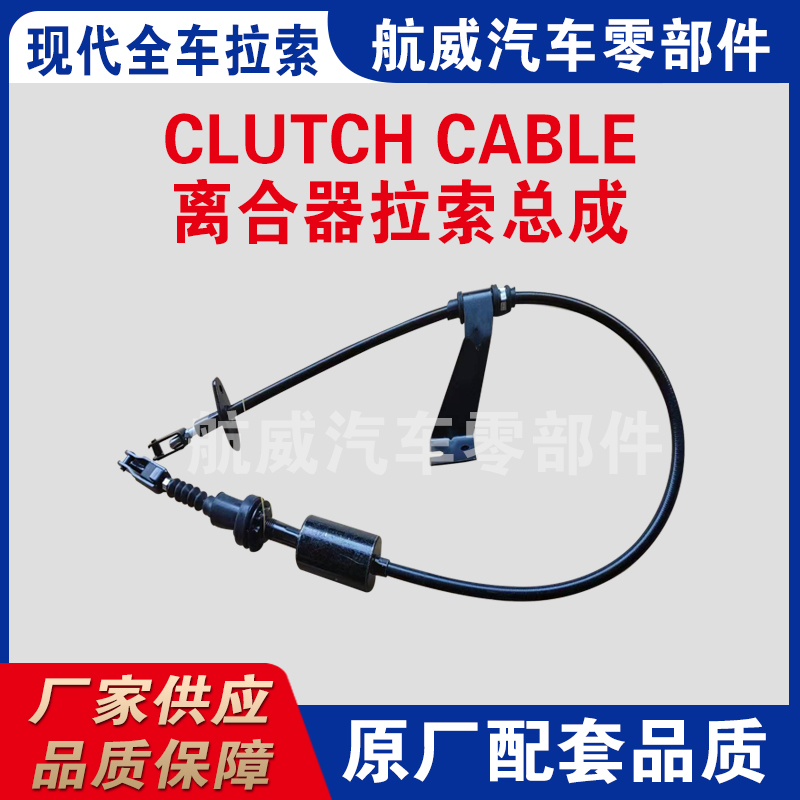throttle cable control
Understanding Throttle Cable Control An Essential Component of Automotive Performance
Throttle cable control is a critical element in the operation of internal combustion engines found in various vehicles, including cars, motorcycles, and boats. It serves as the primary link between the accelerator pedal and the engine, allowing drivers to modulate engine speed and vehicle acceleration. In this article, we will delve into the importance of throttle cable control, how it works, and the impact it has on driving performance and safety.
The Function of the Throttle Cable
At its core, the throttle cable is a mechanical link that connects the accelerator pedal to the throttle body of the engine. When a driver presses the accelerator pedal, the cable pulls on a lever connected to the throttle body, opening the throttle plate and allowing air (and fuel) to enter the engine. The amount the throttle opens directly influences how much power is generated, contributing to the vehicle's acceleration.
This basic mechanism illustrates the essential role that throttle cable control plays in the performance of a vehicle. A well-functioning throttle cable ensures that the engine responds accurately and promptly to the driver's inputs, which is vital for smooth acceleration and overall drivability.
Types of Throttle Control Systems
Traditionally, most vehicles employed a mechanical throttle cable system. However, advances in automotive technology have introduced electronic throttle control (ETC) systems. Instead of a physical cable, these systems use sensors and electric motors to manage throttle position. An accelerator pedal position sensor sends an electrical signal to the engine control unit (ECU), which then adjusts the throttle body position accordingly.
While electronic throttle systems offer precise control and can enhance fuel efficiency, many enthusiasts still prefer mechanical throttle cables for their direct connection and tactile feedback. The choice between these systems often comes down to driver preference and vehicle requirements.
Potential Issues with Throttle Cables
Like any mechanical component, throttle cables can experience wear and tear over time. Common issues include stretching, fraying, or binding, which can lead to delayed throttle response or even a complete throttle failure. A malfunctioning throttle cable can create dangerous situations, ranging from sudden acceleration to an inability to accelerate at all.
throttle cable control

Regular maintenance and inspection of the throttle cable are essential for ensuring reliable vehicle performance. Drivers should be vigilant for warning signs, such as unusual resistance when pressing the accelerator or erratic engine behavior. If such issues arise, it is crucial to address them promptly by either adjusting or replacing the throttle cable.
The Importance of Proper Throttle Calibration
For performance vehicles, throttle cable control is often customized to enhance the driving experience. Different throttle response levels can significantly affect how a car feels during acceleration. Tuners may adjust the cable length or install aftermarket throttle controllers to provide a more sensitive or aggressive throttle response.
Calibrating throttle control is an art that requires balancing driver feedback with mechanical limitations. A sensitive throttle can provide exhilarating performance on the racetrack, yet it may prove challenging for daily driving in everyday traffic.
Future Trends in Throttle Control Technology
As vehicles continue to evolve with advancements in automation and connectivity, the future of throttle control appears to be leaning toward more sophisticated electronic systems. Features such as adaptive cruise control and drive-by-wire technology are becoming more commonplace, allowing for a seamless integration of throttle control with other vehicle systems.
Future developments will likely focus on improving safety and enhancing driving performance while ensuring a personalized experience for drivers. Innovations may include integrated throttle management systems that adapt to different driving conditions or driver preferences in real-time.
Conclusion
Throttle cable control remains a fundamental aspect of automotive design and performance. Whether employing a traditional mechanical cable or a cutting-edge electronic system, the efficiency and responsiveness of throttle control significantly impact the overall driving experience. As technology continues to advance, understanding the intricacies of throttle control will remain essential for vehicle performance enthusiasts and everyday drivers alike. Embracing these changes while respecting the traditional elements will allow for a well-rounded approach to automotive excellence.
-
Upgrade Your Clutch System with Premium Hydraulic Clutch LinesNewsJul.31,2025
-
Unlock the Power of Precision with Our Throttle CablesNewsJul.31,2025
-
Unleash Power and Precision with Our Accelerator CablesNewsJul.31,2025
-
Experience Unmatched Safety with Premium Handbrake CablesNewsJul.31,2025
-
Enhance Your Vehicle's Performance with Quality Gear CablesNewsJul.31,2025
-
Workings of Clutch Pipe and Hose SystemsNewsJun.04,2025
